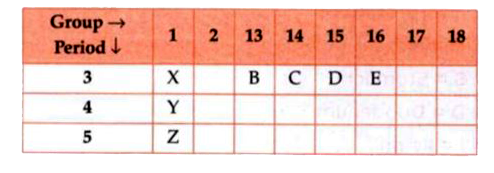The electronic configuration of actinide elements are not known with certainity . Explain.
Step-by-Step Solution:
1. Understanding Actinides: The actinide series consists of 15 elements from actinium (Ac, atomic number 89) to lawrencium (Lr, atomic number 103). These elements are characterized by the filling of the 5f subshell.
2. General Electronic Configuration: The general electronic configuration of actinides can be represented as (Rn) 5f^n 6d^0-1 7s^2, where n can vary from 0 to 14. This indicates that the actinides have electrons in the 5f, 6d, and 7s subshells.
3. Energy Levels of Electrons: In actinides, the energy levels of the 5f and 6d orbitals are very close to each other. This proximity in energy means that electrons can easily transition between these orbitals.
4. Electron Configuration Variability: Due to the similar energy levels of the 5f and 6d orbitals, the electrons can be promoted from the 5f to the 6d subshell or vice versa. This leads to variability in the electron configurations of different actinide elements.
5. Stability Considerations: The actual electron configuration of an actinide element can depend on the stability of the resulting configuration. For instance, if a half-filled or fully-filled subshell is more stable, electrons may shift between the 5f and 6d orbitals to achieve this stability.
6. Conclusion: Because of the close energy levels and the ability of electrons to shift between the 5f and 6d subshells based on stability, the electronic configurations of actinide elements are not fixed and can vary. This leads to uncertainty in defining a specific electronic configuration for these elements.
Topper's Solved these Questions
- BOOK - PRADEEPCHAPTER - D- AND F-BLOCK ELEMENTSEXERCISE - NCERT (QUESTIONS AND EXERCISES WITH ANSERS)10videos
D- AND F-BLOCK ELEMENTS
- BOOK - PRADEEPCHAPTER - D- AND F-BLOCK ELEMENTSEXERCISE - NCERT INTEXT UNSOLVED QUESTIONS10videos
D- AND F-BLOCK ELEMENTS
- BOOK - PRADEEPCHAPTER - D- AND F-BLOCK ELEMENTSEXERCISE - TEST YOUR GRIP( FILL IN THE BLANKS)33videos
D- AND F-BLOCK ELEMENTS
- BOOK - PRADEEPCHAPTER - CORDINATION COMPOUNDSEXERCISE - Important Questions28videos
CORDINATION COMPOUNDS
- BOOK - PRADEEPCHAPTER - ELECTROCHEMISTRYEXERCISE - IMPORTANT QUESTIONS FOR BOARD EXAMINATION25videos
ELECTROCHEMISTRY
Similar Questions
(a). Why second asnd third transition series elements show similar size?
(b). Why electronic configuration of lanthanoids not known with certainty?
(c). The electronic configuration of actinide elements are not known with certainty. Explain.
(d). Why there is similarties (horizontal and vertical) in successive members of the transition series?View SolutionWrite electronic configuration of some elements.
View Solution
Knowledge Check
- Question 1 - Select One
The outer electronic configuratio of actinide elements is
A7s2.5t0−14,6d0B7s2,5f1−14,6d0−1C7s2,5f1−14,6d−10D7s2,5f1−14,6d10 - Question 2 - Select One
The electronic configuration of inner transition elements is
Ans1Bns2np5nd10Cns0−2(n−1)d1−10(n−2)f1−14Dns2(n−1)d0−1(n−2)f1−14 - Question 3 - Select One
General electronic configuration of transition elements is
A(n−1)d1−10ns1−2B(n−2)1−10ns1−2C(n−1)d1−8ns2D(n−2)1−10ns2
Briefly explain why electronic configuration of lanthanoids are not known with certainty.
View SolutionGive the general electronic configuration of actinides.
View Solution
Write electronic configuration of element E.View SolutionGive general electronic configuration of d-block elements.
View SolutionWhat is the general electronic configuration of transition elements
View Solution

